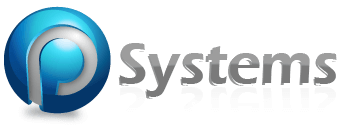
Institutions are constantly seeking innovative ways to enhance the student experience, optimize academic operations, and maintain a competitive edge. Enter eduSIS – the comprehensive Student Information Software Solution that’s redefining the management of the student academic lifecycle. Not only does eduSIS efficiently manage academic data, but it also fosters collaboration among students, academic staff, and operational teams. However, what sets eduSIS apart is its seamless integration with other educational systems, such as Learning Management Systems (LMS) and Enterprise Resource Planning (ERP) applications. Let’s dive into why integration is so crucial and how eduSIS is transforming educational institutions through its integration capabilities.
The Power of Integration in Education
In an era where data reigns supreme, integration has become the linchpin of success for educational institutions. It bridges the gap between various systems and processes, ensuring smooth data flow, consistency, and accuracy. Here’s why it’s so essential:
Streamlined Processes: Integration eliminates redundant data entry and automates administrative tasks, reducing the administrative burden on staff. For instance, when a student enrolls in a course, their information seamlessly flows from the admissions system to eduSIS, sparing staff from manual data entry.
Enhanced Data Accuracy: Manual data entry is prone to errors, but integration minimizes this risk. Accurate and up-to-date information is crucial for informed decision-making, compliance, and student success.
Efficiency Gains: Integration accelerates information retrieval and sharing. Instructors can access student records, including attendance and grades, directly from their LMS, ensuring they have the most current data to support their teaching.
Improved Student Experience: When academic data is integrated, students can access their grades, schedules, and other essential information from a single portal. This enhances their overall experience, reducing frustration and promoting engagement.
eduSIS: The Integration
eduSIS understands the transformative potential of integration and has been designed with this in mind. Here’s how it seamlessly connects with other educational systems:
LMS Integration: eduSIS can integrate seamlessly with Learning Management Systems like Moodle, Blackboard, or Canvas. This integration allows for the exchange of course data, student enrollments, and grades. Students and instructors benefit from a unified experience, accessing course materials, grades, and schedules all in one place.
ERP Integration: Integration with ERP systems ensures a synchronized flow of financial and administrative data, including student billing and financial aid. This collaboration enhances financial transparency and helps institutions efficiently manage their resources.
Other Educational Applications: eduSIS is versatile and can integrate with a wide range of educational software applications, from library management systems to assessment tools. By sharing data and streamlining processes, institutions can create a more cohesive educational ecosystem.
In conclusion, eduSIS is much more than just a Student Information System; it’s a catalyst for educational institutions striving for excellence. Through seamless integration with other educational systems, it empowers institutions to streamline processes, improve data accuracy, and enhance overall efficiency. By embracing eduSIS, educational institutions can truly elevate the student experience and position themselves at the forefront of educational innovation.




